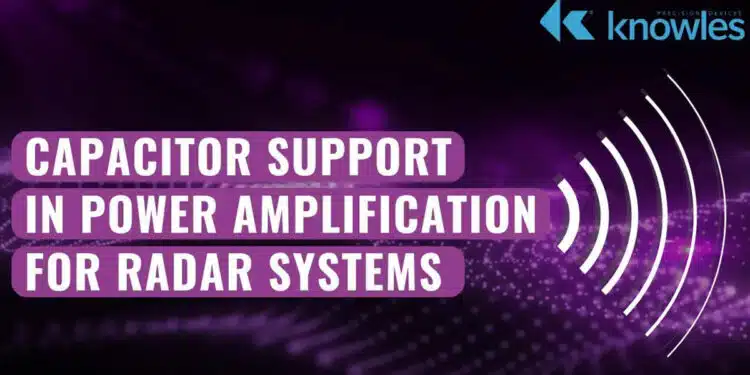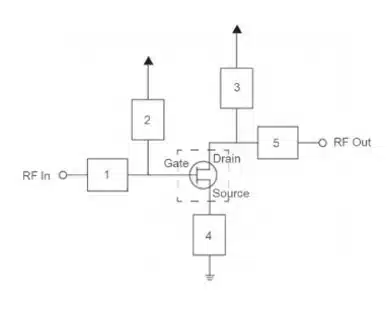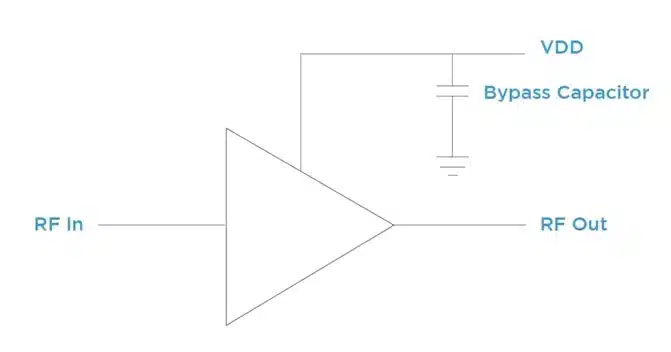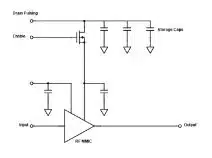This article based on Knowles Precision Devices blog explains role of capacitors in radar power amplifiers application.
In radar systems, power amplifiers serve an essential role in transmitting signals that probe the environment of interest.
They boost signal strength and maintain its quality to achieve the intended range and resolution of the overall system.
Power amplifiers need several types of capacitors to do their jobs. Here are the main circuit locations (Figure 1) where you’ll find capacitors supporting amplifiers.
Input/Output Matching and Coupling
Matching ensures that the input and output impedance of an amplifier aligns with the rest of the circuit. In LC matching, inductors (L) and capacitors (C) form networks that facilitate impedance matching between different parts of a circuit to maximize power transfer and minimize echoes in radio frequency (RF) applications.
Depending on your application requirements, LC matching networks can be configured a few different ways (Figure 2) to accommodate various operating frequencies and impedance levels:
- L-Network: Includes an inductor and a capacitor in series or in parallel, depending on whether the impedance needs to be stepped up or down. L-networks are most effective in narrow frequency bands as they don’t allow for much adjustment.
- Pi-Networks: Form the Greek letter “Pi” with two capacitors and one inductor. They’re designed to transform a low source impedance to a high load impedance or vice versa, so they’re particularly useful in power amplifiers and RF amplifiers.
- T-Network: Includes two inductors and one capacitor (or two capacitors and one inductor) to form a T-shaped configuration. With greater versatility, T-networks can manage a wider range of impedance values compared to L-networks.
While many amplifier monolithic microwave integrated circuits (MMICs) come equipped with matching capabilities, these networks of discrete and distributed elements support finer performance optimizations.
Coupling Capacitors
Coupling describes the linking between different stages of a circuit to ensure effective signal transfer and strong system performance. In radar systems, the way components are coupled can significantly impact signal integrity and power efficiency. With coupling capacitors in series, AC coupling (i.e., DC blocking) connects circuit stages such that only AC signals, like RF or microwave signals, pass from one stage to the next. By extension, this removes any DC offset and protects components by allowing chips with different common mode voltages to interface with each other. Amplifier MMICs can also come with their own coupling, but circuit designers are largely responsible for coupling in high-performance systems.
DC Blocking Capacitors – Bias Networks
Biasing using DC blocking capacitors ensures that the right amount of DC voltage and current goes to an active device (e.g., field-effect transistor (FET)) to keep it operating in an optimal region.
An active device can also connect to a gate, drain, or source bias network. Gate bias networks control voltage at the gate terminal of an FET, relative to its source, to act as a switch in digital applications or a set point for analog applications. Drain bias networks set and control voltage at the drain terminal of an FET, which influences the output characteristics. Source bias networks adjust voltage and current at the source terminal for added stability. Bias networks are critical for setting the quiescent current to optimize amplifier performance metrics like linearity and efficiency.
Bypass capacitors and storage capacitors connect to bias networks and contribute to the stability and efficiency of the amplifier circuit. Bypass capacitors act as lowpass filters, allowing DC signal through while removing low- and high-frequency RF noise and interference that could negatively impact the amplifier. Larger capacitance is helpful for low-frequency filtering and smaller capacitance is best suited for higher-frequency RF signals.
Large charge storage capacitors can maintain power levels during pulsed operation. Aluminum electrolytic capacitors, for example, make great storage capacitors because of their high capacitance density. They’re often found in or near the T/R module and the pulse driver circuitry in a radar system.
From signal conditioning to stability and noise reduction, capacitors support a variety of critical functions in power amplification within radar systems. As these systems grow more and more complex, component-level decisions have a more significant impact on performance.




































